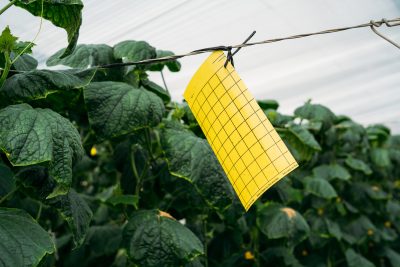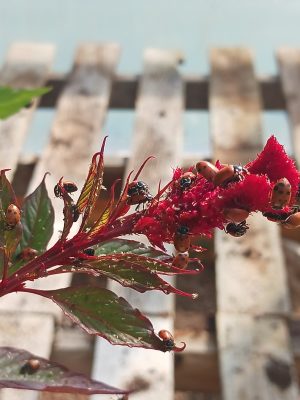Many livestock producers and private landowners around the state are recertifying their private pesticide applicator licenses before they expire on April 30, 2024.
One concept that is worth keeping in mind this season is Integrated Pest Management or IPM. In this strategy, a variety of tools and practices are utilized to effectively manage pests. Chemical control has its place, but there are many non-chemical approaches to pest management using the IPM framework.
Anyone seeking to manage a pest can benefit from increased awareness and understanding of the components of IPM. Furthermore, IPM has been found to be more effective than relying on a single management approach.
What are the components of Integrated Pest Management?

Monitoring and correct identification of pest species may seem like obvious steps, but they are often overlooked. These components of IPM provide critical information about the presence of pests and their potential to cause damage. Monitoring and identification are continuous and require constant vigilance.
An IPM program also requires an action threshold, or decision point, which is established prior to the occurrence of significant pest damage. This is often an economic threshold established at or near the point where the cost of implementing a control measure is equal to the loss in profits due to pest damage. Action thresholds may vary depending on the value of the object at risk and the tolerance for damage.
The first line of defense is always prevention. It is almost always quicker and cheaper to prevent an outbreak of a pest species than it is to address the consequences of an established pest population. These processes and steps can be applied to the smallest backyard vegetable patch or the largest open-range livestock operation in the state.
If monitoring and identification indicate that an action threshold has been reached and that preventative measures are no longer sufficient, it is time to enact a control measure.
What are the control options using IPM?
Integrated Pest Management control options include biological controls, cultural controls, genetic controls, physical and mechanical controls, regulatory controls, and chemical controls. A few details about each of these control mechanisms are listed below.

Biological control involves introducing a natural enemy to a pest species. This can include a predator, parasite, pathogen, or competitor that will consume the pest or reduce its harmful effects. An example of biological control is the musk thistle rosette weevil, an insect with larvae that burrow into the flower heads of musk thistles and feed upon the developing seeds.
Cultural controls prevent the establishment of a pest population or limit the pest’s reproduction or dispersal in some way. Taking a side-by-side ATV through the car wash to clean tires and undercarriage prior to and immediately after an excursion in the mountains is a preventative cultural control method that limits the spread of undesirable weed seed into new areas.
Genetic control is a tool used by plant and animal breeders to make certain pest resistance traits inherent. A crop that repels a pest organism using a substance in its tissues requires less time and money for pest control later in the growing season. For example, some cultivars of ornamental plants and fruit trees are prized for their natural resistance to powdery mildew and other fungal diseases.
Physical and mechanical control involves direct elimination of a pest using traps, exclusion of a pest using fencing or a barrier, and sealing of cracks and gaps to prevent pest access to an area. If a pest control method uses an object or changes the state of the immediate environment (for example, temperature or humidity), then it would likely be considered a physical or mechanical control strategy.
Regulatory control is a method enacted by government agencies and other organizations when there is potential for a severe threat to move into or out of a location. Regulatory controls are often tied to a defined geographic area. Within regulatory controls, quarantine regulations are used to prevent movement of a pest outside an area of infestation or into a sensitive area where pest introduction would be particularly destructive. Eradication regulations are used to eliminate a pest within a defined perimeter. In Wyoming, quarantine controls are practiced when livestock test positive for the Brucella bacteria that cause late-gestation abortions.
Chemical control is the use of a pesticide to manage a pest organism. According to the University of Wyoming, a pesticide is “any material that is applied to plants, soil, water, harvested crops, structures, clothing and furnishings, or animals to kill, attract, repel, or regulate or interrupt growth and mating of pests, or to regulate plant growth.” Pesticide is a general term that includes all target-specific products like insecticides, fungicides, rodenticides, and herbicides.
Each of the components of Integrated Pest Management has a role in effective control of pests. As with tools in a toolbox, biological controls, cultural controls, genetic controls, physical/mechanical controls, regulatory controls and chemical controls are useful and appropriate in different contexts.
For more information about the Wyoming pesticide applicator certification and licensing process, visit https://bit.ly/WYOpsep or contact your local University of Wyoming Extension office.
Micah Most is the University of Wyoming Extension agriculture and natural resources educator serving Johnson County. He can be reached at mmost@uwyo.edu or (307) 684-7522.




